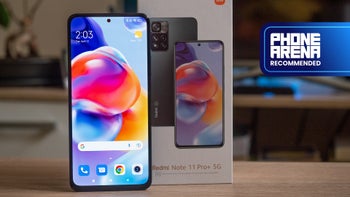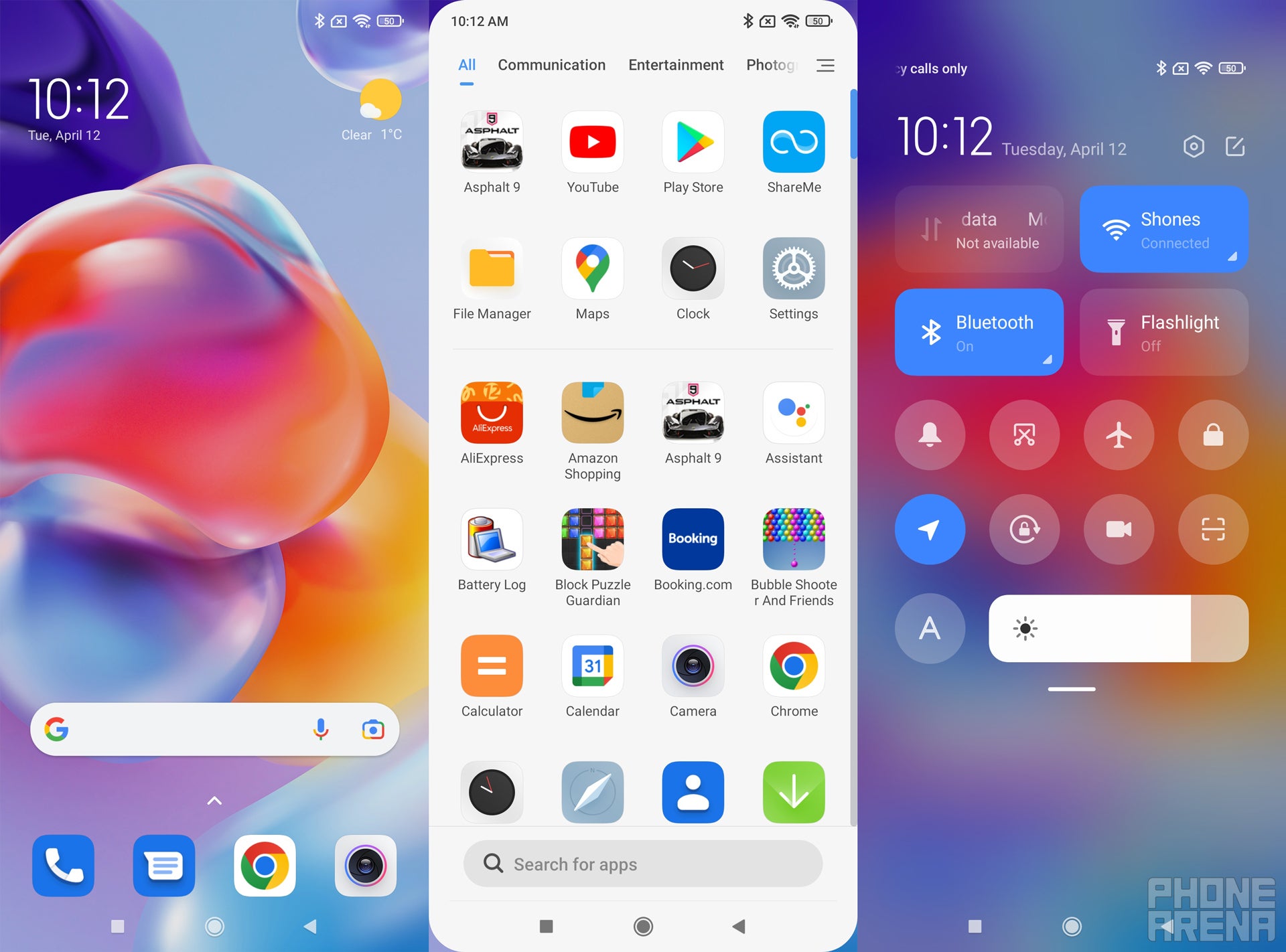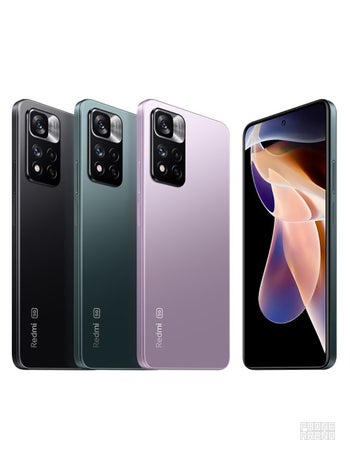Redmi Note 11 Pro+ 5G Review

Intro
In 2021, Xiaomi released some of the best budget phones on the market, one of which was the Redmi Note 10 Pro+. It was a great bang-for-your-buck option, delivering high quality and performance at a more affordable price tag.
Now, the Redmi Note 11 Pro+ 5G has arrived at the scene and aims to achieve that same great balance between price and quality, with a few improvements. It is not alone, however, but rather a part of the Note 11 trio.
In this review, we focus on the Redmi Note 11 Pro+ 5G, but you can find reviews of the other models below.
Also read: Redmi Note 11 Pro 5G review
With all this in mind, keep reading to find out what the Redmi Note 11 Pro+ 5G is made of and whether it is what you are looking for.
Design
Simple and clean, almost looks like it’s going to a gala
The design team at Xiaomi definitely put in some extra effort when designing the Redmi Note 11 Pro+. Both in terms of shape and color, it is a beautiful piece of tech, albeit quite the hefty one.
Size-wise, the phone measures in 6.44 x 2.99 x 0.32 inches (163.65 x 76.19 x 8.34 millimeters) and weighs in at 7.19 ounces (204 grams). While this is, without a doubt, a big phone, the combination of flat edges and rounded corners make it easy and reassuring to hold.
All of the colors look pretty slick and classy, but the “Forest Green” that we had here at PhoneArena for review I found to be the best-looking when it comes to the color options. There are two more, including Star Blue and Graphite Gray that don’t look too shabby either, judging from the official press renders.
The body of the Redmi Note 11 Pro+ is made out of a plastic frame and a glass back panel, which does a decent job at keeping oily fingerprints at bay. The front of the phone has Gorilla Glass 5 to protect the screen and the punch-hole style front-facing camera and some more added protection as shown by the IP53 certification, which means the device is splash-proof and somewhat dust resistant.
What you get in the box
Inside the Redmi Note 11 Pro+, you get the phone itself, a 120W charger (Woohoo!), USB-C to USB-C charging cable, and a transparent case that feels sturdy and durable. Besides the case, there is an added plastic screen protector that comes preinstalled on the screen.
Display Quality
The Redmi Note 11 Pro+ comes with a 6.67” 120Hz AMOLED display with 2400 x 1080 pixel resolution, wrapped with thin and unobtrusive bezels. Blacks and contrast are perfectly good for watching movies and videos, and there are no issues when viewing the phone from an angle. Visibility is great as well, and I found it easy to use the phone outside on a sunny day.
Colors also look punchy and accurate with the default Vivid mode, although you have the option to tinker and adjust them to your liking inside the phone’s display settings.
When it comes to unlocking the Redmi Note 11 Pro+, the fingerprint sensor that’s embedded within the power button on the side was accurate and quick to read my thumb any time I placed it there. There is also the option for face-unlock, which was pretty snappy, but like most out there, not as secure.
Performance and Software
Some bloatware infestation, but a quick exterminator call and it is smooth sailing after that
6GB+128GB - $369
8GB+128GB - $399
8GB+128GB - $449
As mentioned earlier, Xiaomi has decided to put a different chipset inside all three members of the Redmi Note 11 family. In the case of the Note 11 Pro+, that’s the MediaTek Dimesnity 920, both in the Chinese and Global versions of the phone. It is a mid-range 5G chip built on the 6nm process that excels at power efficiency but also boosts gaming performance.
Thanks to Xiaomi’s LiquidCool 2.0 technology, you also won’t have to worry about the phone overheating while you are smashing away the virtual buttons on that screen.
Suffice to say, everyday use was a total breeze for the Redmi Note 11 Pro+. I had absolutely no problems while navigating the UI, browsing the web, or watching media. Everything loaded up quickly and without hiccups.
Software
The Redmi Note 11 Pro+ came with Xiaomi’s MIUI 12.5.2, which was a bit odd considering that the Redmi Note 11 Pro, which I had tested earlier, had already received the MIUI 13 update. Somewhat more disappointing, however, is the fact that behind both those versions of MIUI lies the now several months old Android 11.
When you combine the old software with only two years of promised major software updates, this definitely starts to look like one of the more significant setbacks for the Redmi Note 11 Pro+. In other words, the latest Android version you would get with this phone is Android 13.

Going back to Xiaomi’s MIUI, it is now a more user-friendly and intuitive software. At times it even resembles a more stock Android feel with things like the app drawer and dragging down the notifications menu from anywhere on the screen.
At the same time, though, there are also some nifty features adopted from Apple’s iOS software. The control center, for example, takes a similar design approach with big toggle buttons, albeit mixed in with the smaller ones from Android.
Camera
Won’t shoot any Hollywood movies with this, but plenty good for everyday photo snapping
The camera system features a 108MP with f/1.8 main snapper, 8MP f/2.2 ultra-wide with a 120° field of view, and a 2MP f/2.4 macro camera.
The main camera is the star of the show here. It provides crisp images with good dynamic range. Playing a big role in its capabilities is Samsung’s HM2 sensor that’s powering it, like the 108MP mode, which pumps out a highly detailed image when you take a photo. By default, however, the main camera does not shoot at 108MP, but rather uses 9-in-1 binning to make for bigger pixels that can capture more light, defaulting to a 12MP output—useful in low-light scenarios.
The 8MP ultra-wide camera also does a really good job of delivering high detail and a good dynamic range. Thankfully, there doesn’t seem to be any difference in color representation either when compared to the main shooter.
The 2MP macro camera also does a decent job at being sharp, however, you can’t get as close to the subject as you would expect from a macro camera.
For the selfie-lovers out there, you will be happy to know that the front-facing camera will not leave you disappointed. The images that come out of it are as good as I would want them to be, with great clarity and pleasing colors. The dynamic range when shooting with the front-facing camera seems to be doing a good job too.
There is also an AI mode that is supposed to figure out the scenery and adjust the camera’s settings accordingly but in my experience it proved useless, and in some cases even hindered the end result by making the colors less vibrant and overexposing the image.
Much of the image quality that’s seen on the Redmi Note 11 Pro+ when shooting stills can also be observed when shooting video. The detail from both the main and ultra-wide cameras is pretty good, and so are the colors.
Dynamic range in video mode is a bit of a mixed bag. While the sky and ground look overall well exposed, there are some parts of the image that remain too bright and the detail in those areas starts to suffer.

Video stabilization is another weakness. Both in 1080p 60fps and 4K 30fps, holding the phone with one hand resulted in shaky footage both while walking and lightly running.

The ultra-wide, on the other hand, was far better stabilized, although that's to be expected since wider lenses tend to be more forgiving of movement.

Last but not least, I was left quite happy with the audio that the Redmi Note 11 Pro+ microphones recorded while I was shooting video, which cannot be said about many affordable handsets.
Audio Quality
No JBL Bluetooth speaker? No problem! Got one right here
The audio quality coming out of the Redmi Note 11 Pro+ speakers is one of the best parts of this phone. The highs and mids are covered very well, and the bass is not bad at all for a phone of this price range.
The sound that this dual speaker layout produces is rich and full, even at 100% volume. And speaking of which, the amount of volume is more than you would need, with ample room for you to hear your phone in loud environments or when you leave it in another room.
More often than not, when a manufacturer slaps a brand on one of its devices it is simply a marketing tactic but in this case, it seems that the SOUND BY JBL engraving has more to its meaning than that. There is also support for Dolby Atmos.
As mentioned earlier, there is also a 3.5mm audio jack, so you have the option to plug in some wired headphones if you prefer that.
Haptics
There is a night and day difference between the Redmi Note 11 Pro+ haptics and that of the Redmi Note 11 Pro. The haptic feedback is much, much tighter and feels good.
Battery Life and Charging
It’s like Formula 1, but with chargers
Looking at the Redmi Note 11 family of phones, you might be surprised to find out that here Redmi Note 11 Pro+ actually has a smaller battery (4,500mAh) than the cheaper Redmi Note 11 Pro model (5,000mAh).
In exchange for the smaller size, however, the Plus version rewards users with much faster charging. Unlike the non-Plus Redmi model which uses a standard battery, the Plus version features a dual-cell battery which allows it to handle much faster, 120W charging speeds.
This translates to a 0-100% charge in as little as 20 minutes or so! Every time I checked on this phone after a very quick coffee break, I was genuinely surprised at how fast it had juiced up!
Competitors
Xiaomi might make arguably one of the best budget-friendly phones out there but other companies like OnePlus are also major players. A good alternative to the Redmi Note 11 Pro+, especially if you like a software experience that’s closer to stock Android, is the OnePlus Nord CE 2.
The OnePlus Nord CE 2 offers a great display, snappy performance, plenty of battery life, fast charging (although not as fast as the Redmi Note 11 Pro+), a microSD card slot, a 3.5mm audio jack, and much more. However, its camera is not as good, and there’s no IP certification for water and dust protection.
Another route you can go is the Galaxy A53, which also has dual speakers that sound just as good, if not even better. Not to mention it's rocking one of Samsung’s awesome screens that is more visible than the Redmi and the better stabilization while shooting video.
Summary and Final Verdict
Xiaomi has done it again. The Redmi Note 11 Pro+ is another great and very well-rounded affordable phone under the company’s belt. It covers most of the bases for what makes a phone great: display, audio, battery, camera, etc. Even the software has become easier to recommend.
It’s not all rainbows and sunshine, of course, such as the bad video stabilization with the main camera and the tendency to overexpose at times. The old software also does this Redmi Plus model no favors. On top of that, you only get two major Android updates.
But if you can overlook these few negatives, the Redmi Note 11 Pro+ is a great budget-friendly phone around the $400 mark that will likely leave you happy with your purchase choice.





















Things that are NOT allowed: